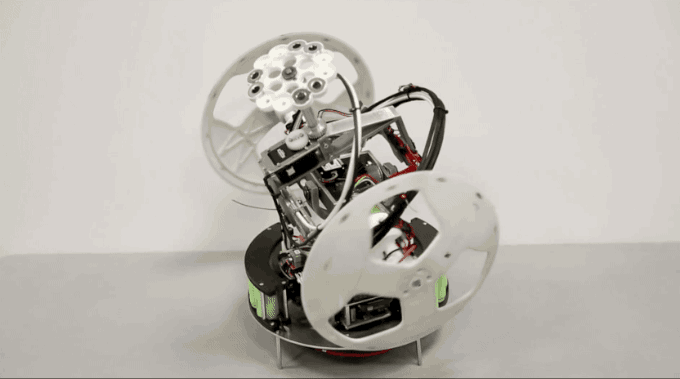Star Wars engineering experts have tipped their hand regarding one of Hollywood’s best-kept secrets: Exactly how BB-8 works in Star Wars: The Force Awakens. While film-makers behind the movie have given some clues as to how the droid works, and people have engineered backwards from Sphero’s toy version of the rolling droid, this is the first time we’ve been told in no uncertain terms how the droid worked on set during filming.
Force Awakens’ technical staffers Matt Denton and Josh Lee were on stage at Star Wars Celebration Europe this past weekend in London, and detailed the story of BB-8. The cute ball that briefly became America’s darling in 2015 upon the movie’s release was mostly a two-person operation, and was more tricycle than uni-roller in most of its appearances.
Before you get too sad that BB-8’s balancing act isn’t the real thing, know that Denton and Lee started by figuring out how they could do it for real, without using any movie magic. But the realities of filming meant they also needed a BB-8 that could nail every take reliably — human actors are hard enough to direct without robots flubbing their blocking.
In the two-person arrangement, one is controlling BB-8’s head, and one is controlling its body. But before it got that advanced, there was a proof-of-concept made of foam with what looked like a pair of ice cream scoop handles affixed to the back to control body rolling and head movement separately. The initial simple puppet already shows just how much character BB-8 can have with only really a few moving components, and that range of expression really delivers in the movie itself.
The finished puppet was affixed to a large arm that let puppeteers push it over any terrain, including the sand dunes that caused so much debate (how does the smooth ball get traction on sand!) during the film’s original debut. The rigging attached to the puppet was edited out in post, and different arrangements for the handles were used to try to make sure the puppeteer was only minimally in-shot, so that they only needed to use a minimum of digital painting. J.J. Abrams and his team were looking to use practical effects wherever possible to capture the feel of the original trilogy, and BB-8 was no exception.
Also in keeping with that desire to keep things looking real: Abrams generally insisted on using the actual functional versions of BB-8, instead of “stunt” doubles created by the effects team that were essentially big, durable solid models. There are seven rolling BB-8s in total, and each of these gets re-tread as they’re used during filming, which Lee and Denton said require “quite a large team” to “keep him rolling.”
In addition to the rig-controlled rolling version, ILM also created a “wiggler” that kept its head straight ahead while the body “wiggled,” as the name implies. This was used in a lot of close-up shots in the movie, including many of the exchanges between BB-8 and Finn on the Millennium Falcon.
Finally, there’s a remote-controlled version of BB-8 called the “Trike,” which is “all-terrain” and has a unique two-wheel caddy-style apparatus that pushed the spherical body (the third wheel of the tricycle or Trike apparatus). Another arm extending to the head controls its movement independent of the body, with ILM editing out the extra wheels and control frame in editing.
The magic behind the movie may have been mostly varying degrees of puppetry, but a rolling BB-8 without training wheels was actually made for the red carpet premiere of the movie, and that’s where this panel is really pulling back the curtain, showing the internals of the working model they first demoed for Disney and then finished for the premiere once a rough working model unlocked some additional cash to follow through on the design.
































Comment